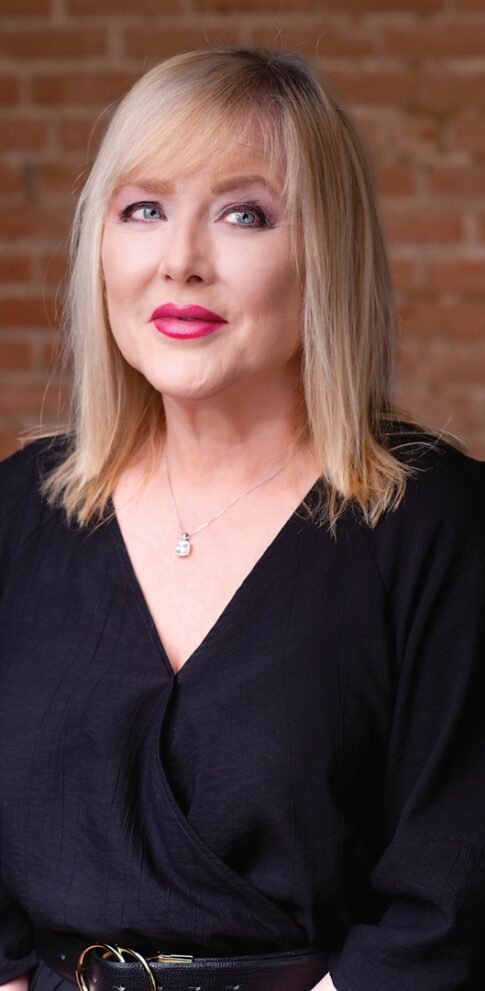
BY Taylor Adams Cogan
In 2009, Paula Harris picked up the Dallas Observer’s “Best of Dallas” issue and paused at a certain listing.
“There was this gallery, and I thought, ‘That’s an interesting name,’” she says. “We were still in the MySpace days, so I was going through that rudimentary list of events the way I used to with the newspaper. There were some really great events, and I would find things to do. I think it might’ve popped up there: the Love of Kettle.”
Her daughter Alex was a junior in high school, learning how to use her camera and thinking she’d be on the school newspaper or yearbook the next year. So, Paula decided they’d just run around.
“The first place we ventured out to from the suburbs was Kettle in ‘scary’ Deep Ellum,” Paula says. “Alex has this goofy smile on her face and was so enamored by it.”
They didn’t talk to many people that first night, taking in the vibe around creatives in the special gathering. The energy made Paula keep seeking events, bringing her closer to the urban core between Deep Ellum and the Cedars.
Kettle being what it has always been, it kept drawing the two back to the gallery space on Elm Street. Happy as she was about it, Paula was still telling Alex, “Don’t tell your friends that Mom is taking you to Deep Ellum – they wouldn’t understand.”
Paula had gotten it at this point, but before then, she was one of those parents, forbidding her children from going to the neighborhood. So when Paula started going back to the neighborhood around 2009, Alex’s brother piped in: “So, let me get this straight, I was not allowed to go, and now you’re taking my baby sister?” he told her.
Unfair as it might’ve felt, that’s the effect of the cycle we’ve seen in Deep Ellum, and by the time Paula started to go to Kettle, the neighborhood was changing. And, she’d change along with it, especially from one night at the gallery, when Frank walked up to her, offering her a glass of wine.
“I was so clueless,” she says, having no idea the man was part of the creative heartbeat of the neighborhood and the owner of the gallery she already loved. She started telling him about a tunnel she found, the closest thing she had previously come to Deep Ellum – did he remember it? (He helped make it happen, of course.)
“He started talking, obviously. He was very kind and nice to not treat me like an idiot,” she says. “We were not used to being around such open and warm and creative people. It shocked us in the best possible way.”
Paula and Alex kept hanging around, and Frank took Alex under his wing, inviting her to shoot photos with him. By 2010, Paula and Frank were dating.
They were together for about six months before Frank’s son, Frankie, passed away. It shook the neighborhood, and Paula saw how people could come together even more closely. The loss revealed something deeper about the neighborhood Paula had grown to love.
“I learned through that how close people in the community really were and how supportive of each other they really were,” she says. “Sean Fitzgerald jumped right in and started organizing the memorial. That’s just how Sean always was.”
It was Sean, then the president of the Deep Ellum Community Association, who got Paula involved in the Deep Ellum Arts Festival, a first for her to explore serving in the neighborhood.
“Through the arts festival, I was discovering how close people were and getting to know how people came together,” she says. “The reputation of this neighborhood was so rough, and people don’t realize what it really is, they think it’s just a bunch of tattooed people, which would be scary in the suburbs.”
We know they’re not scary.
“I realized the misperception of this neighborhood was strong,” she says.
She remembers friends visiting from the suburbs in 2011 or 2012 – one mom was surprised to bump into Paula at Kettle. “She said, ‘I didn’t even know this was a great neighborhood.’ And I thought, ‘Good. We don’t want everyone knowing.’”
That changed, of course, when Paula became part of what Deep Ellum was building.
After Kettle moved to its current location on Main Street in 2013, Paula began organizing events with DECA. Soon, she’d find herself walking door to door through the neighborhood looking to throw a little something together. She didn’t yet have relationships with managers and the like, but cold-asked if they would be interested in serving free wine for an event to get people walking around, shop to shop.
“I was met with skepticism. ‘This is Deep Ellum: shouldn’t it be beer?’ I was thinking of attracting the young professional women, and they like to drink wine – have them drink wine when they’re shopping,” she says.
The first wine walk started with four businesses. If you’re ever at a friend’s house and see a small, ceramic mug, listing cities from Neverland and Gotham City to Twin Peaks and Wonderland, ending with Deep Ellum, you’re looking at the first wine walk “glass.”
If that friend has this perfect little coffee mug, you may see they have shelves of small and sturdy wine glasses. Those four businesses quickly grew to 12 as the word started spreading, and more people flocked to the Deep Ellum Wine Walk.
“There were so many vacant buildings. It was dark, you really noticed when something started happening,” she says.
Since then, businesses have come and gone. Beautification has made its way to curbsides, and more lighting has gone up.
Paula’s proud of what she helped spark. Each month, people line up on the sidewalk outside Kettle’s doors, awaiting their wrist bands and the current wine glass. No longer a creative list of words, these are small works of art on their own from local artists, many of whom you’ll see works by on Kettle’s walls.
Nearly 350 people were coming to Deep Ellum for the wine walk most months, and that number soared past 700 during spring, summer, and Halloween.
“The streets were just teeming with people. It was beautiful,” she says.
Along the way, Paula learned how the business side of Deep Ellum worked. She saw new places open, some upscale, some experimental. Some left, some stuck. Some festivals flopped. Others found a rhythm.
Through it all, she kept walking the streets. Connecting people. Dreaming up new ways to show off the soul of the neighborhood she once considered off-limits.
“Tattoos, musicians, artists – riding motorcycles. Scariest people ever, right?” she jokes. “Turns out, they were the kindest.”
